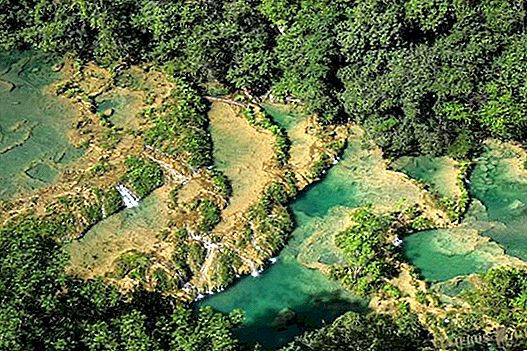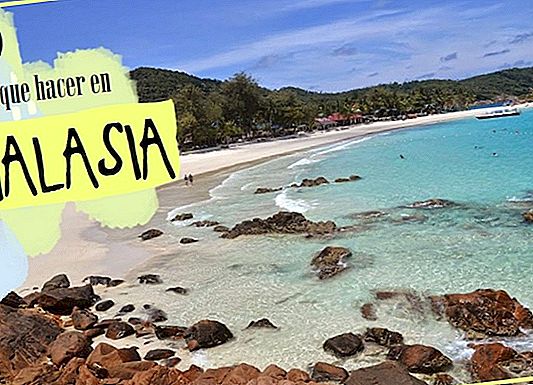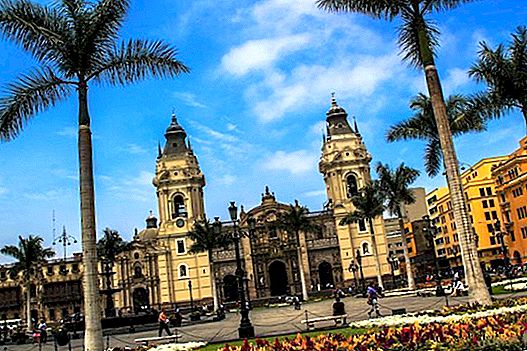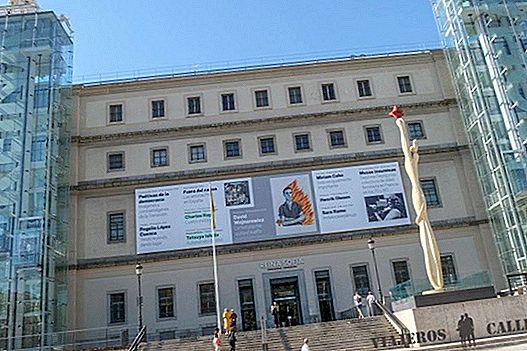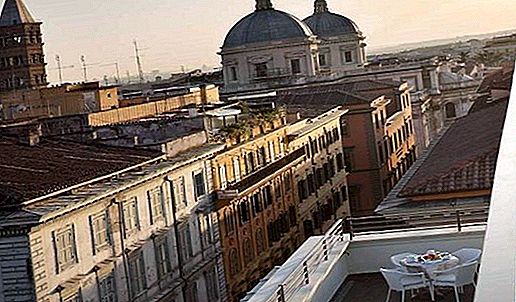We know to use the transportation in Japan It is usually one of the main fears of travelers when traveling to Japan, usually caused by the language barrier and the mistake of considering it much more difficult than it really is.
It is for this reason, that after our first trip to Japan for free in 18 days, where we met many of the essential places to see in Japan and our second visit to the Japanese country, where we have spent two months in the country and of which we have written the guide to travel to Japan, we want to leave you a series of tips on how to use transportation in Japan, so that you can get to know this amazing country, just dedicating yourself to enjoy it, without fear of not understand, even making public transportation an unforgettable experience.
Useful applications to use transportation in Japan
First of all and start describing the different transport in Japan, which you will surely use in your trip, we want to leave some of what we believe, they are Useful applications to use transportation in JapanIn addition to transport maps in the main cities, which we are sure, will make your trip even easier.
- Hyperdia: With this tool, you will be able to prepare and consult any data about train transportation in Japan, including schedules, platform number, prices ...
It is not available in Spanish, but English and both the web and the application are very intuitive and easy to use. Without a doubt one of the most necessary tools for a trip to Japan for free.
- How to use HyperDia
- How to use the Japan Rail Pass (JRP)
- Google Maps: Perfect tool to plan both walking routes and public transport. If you have no connection, you can download the maps and consult them offline.
- Maps.me: Next to Google Maps, the best tool to plan routes on foot. After downloading the maps, it works offline.
- Kyoto metro map
- Kyoto bus map
- Tokyo metro map

How to use transportation in Japan
Recommended travel cardsRemember that in order not to pay commissions and always have the current change we recommend you use the N26 card to pay and the Bnext and Revolut cards to get money at the ATMs. They are the ones we use, They are free and will save you a lot.
You can find more information in this article about the best cards to travel without commissions.
Transportation in Kyoto
Although compared to Tokyo, Kyoto could be considered a small city, you just have to see some of the things to see and do in Kyoto to realize that public transport is essential if you want to move around the city at a pace that allows you to see the maximum places of interest, spending as little time as possible on transfers.
If in addition to this we take into account that the essential places to visit in Kyoto are scattered throughout the city, some even located on the outskirts, a reason to confirm that the transport in Kyoto It will be essential if you want to make the most of the time and enjoy the city to the fullest.
Metro in Kyoto
As in most cities, the subway in Kyoto, is usually considered one of the most difficult public transport to use, adding to this idea, the language barrier, which for many we could say, is insurmountable or at least, one of the great impediments to face transportation in Japan with a smile .
As with the rest of transportation in Japan, we have to tell you that it is very intuitive, much more than you think, and that we are sure that after using it a couple of times, you will leave those fears aside and start enjoying it.
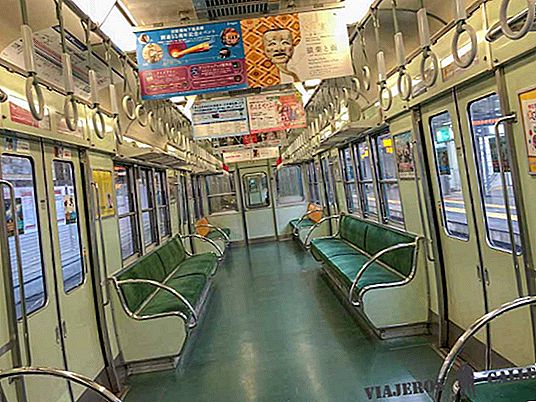
Transportation in Japan
How to use the subway in Kyoto
That said, we have to tell you that in Kyoto you are in luck, since the subway is much simpler than in Tokyo, since there are only two lines, the Karasuma, red and marked with the letter "K", which crosses west to east the city and the Tozai, green and with the letter "T", which crosses the city from north to south.
If we add to this that you can change from one to another in an intermediate station, named Karasuma-Oike, everything seems much easier, right?
You should also keep in mind that each of the stations has a number assigned, something very useful when determining which station you should get off and know how long the journey will take you.
And as having something visual we know that it always helps, we recommend you download and take the map of the Kyoto subway lines, in which you can also see the private train lines, also useful for some movements.
Price of the subway in Kyoto
The price of the subway in Kyoto is not fixed, as is the case with the bus, this being between 210 yen for the cheapest route and 350 the most expensive and long (110-180 yen children).
As on the bus, if you think you are going to use the subway a lot, it can be interesting to buy the one-day pass, known as the Kyoto City Subway One-Day Pass, with which you can use the subway unlimited for 600 yen for adults and 300 yen children.
To take into account that to this pass you can add the bus voucher for a full day, with which you will have unlimited metro and bus trips for 1,200 yen adults and 600 yen for children.
You should keep in mind that this pass can be purchased in advance and you do not have to use it on the day of purchase. The date will be printed on the back of the ticket the first time you use it and will be valid for that day.
If you use the Kintetsu or Keihan line, you will have to pay an additional fee, since this ticket is only for Kyoto subway lines.
In addition to these passes and the individual ticket, you can use the ICOCA, PASMO or SUICA wallet cards, with which you will pay the same amount, but with which you will not have to be buying the tickets individually, thus being the payment process a lot faster and easier.
This option is perfect if you are going to make 1 or 2 trips a day, since it would not compensate you to buy the voucher.
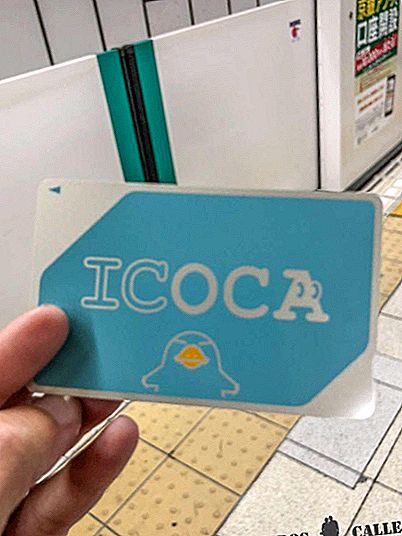
ICOCA card. Transportation in Japan
Tips for the subway in Kyoto
To access the subway, you must pass the ticket per trip, the voucher or the money card in the machine, so that it opens and once you have made the route, pass it again to exit. On the machine screen you will see the amount charged to you, in case you use any of the wallet cards. If you use a bonus, you only have to pass it.
And in case you bought an individual ticket and you were wrong about the amount, at the beginning we told you that the price of the ticket varied according to the route, you will see that there are some machines in which it says "Rate Adjustment". It is there where you can adjust the ticket, paying what is missing, to be able to leave.
Although for us the subway was a great ally in certain visits, we believe that the bus is much more efficient to access the most tourist places of the city.
Bus in Kyoto
For us, without a doubt, the best transport in Kyoto to reach most of the tourist attractions, if not all.
Like the subway, the extensive bus network may seem impossible to use for a traveler who has just arrived in the city. We assure you that, also like the rest of transportation in Japan, is much easier than you think.
Of course, we advise you to be accompanied by Google Maps, you can download the maps to consult them offline, in addition to carrying a map of the bus lines in Kyoto. You can get it at the office next to the Kyoto Station or directly download this here.
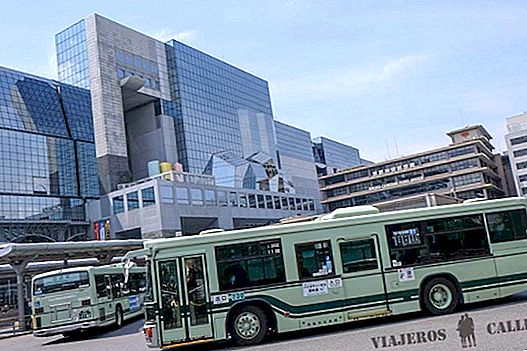
Bus in Kyoto. Transportation in Japan
Bus price in Kyoto
The price of the ticket is 230 yen adults and 120 yen children, although if you are going to use the service a lot, you will find it much more profitable to buy the Kyoto City Bus One-Day Pass, the full day bonus, for 600 yen and 300 yen children, with which you can use any bus line in the city as many times as you want throughout a full day.
As in the subway, you can also use the ICOCA, PASMO and SUICA wallet cards.
If you are going to spend a few days in Kyoto, surely the most profitable will be to purchase the Kyoto City Bus One-Day Pass. You can buy it directly at the Kyoto Station office, at the machine at the 100 bus stop or directly at the hotel for the same price.
We have not used this last option, but as far as we have known, it is currently a service offered by many accommodations.
Tips and how to use the bus in Kyoto
When using the bus, it is good to know several data:
- Buses in Japan are accessed through the back door and you get off the front.
- There are buttons on most seats to request a stop. Use them not to skip yours.
- In Japan, interestingly, the transfer of seats to older people, pregnant women or children, is not very common. Let's try to be responsible and as much as they don't, we give the seats to the people who need it.
- On the most tourist lines, there are screens that announce the next stop, with the name of the tourist attraction next door. This is very useful to know at what stop you should get off.
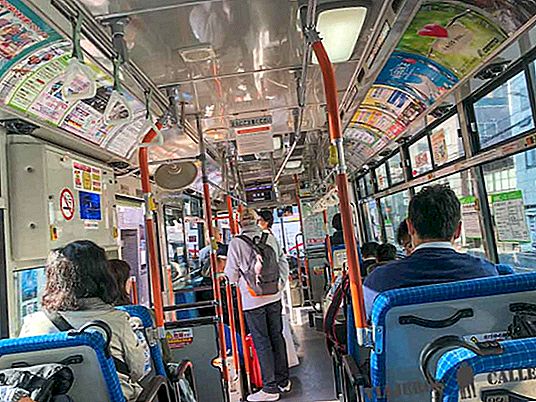
Kyoto bus. Transportation in Japan
The payment process is much simpler than it may seem, although some aspects should also be clear:
- If you do not have any bonus, you must pay in cash and always with the exact amount. If there is no change, next to the driver there is a machine where you can enter a 1000 yen bill and it will give you the necessary change.
- If you are going to use the Kyoto City Bus One-Day Pass, on the first journey of the day, you must enter it in the machine next to the driver. You will see that the date and time are printed on the back.
From this moment, you will only have to show the card, for the part of the date to the driver every time you use it.
- If you use a wallet card, such as in the subway, you should bring it closer to the machine sensor next to the driver and you will see on the screen how the amount charged and what is left on the card is reflected.
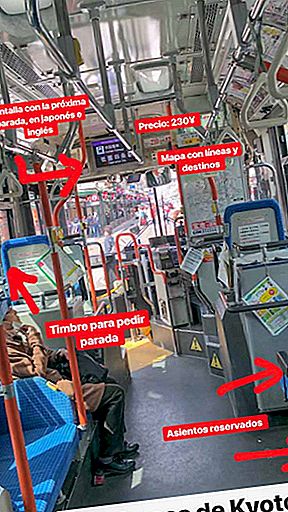
Buses in Kyoto

Kyoto bus
Buses 100-101-102 in Kyoto
These lines are known as the tourist lines And we could say that they pass practically all the tourist attractions of the city.
The 100 and 101 have stops at Kyoto station and run through the city from north to south, while 102 runs through it from east to west.
When you arrive in Kyoto, ask at your accommodation which is the closest stop or use Google Maps and so you can be sure which line you should take to visit the city.
Something advisable is to keep in mind that your hotel has a bus stop nearby, and if it is 100-101 or 102, much better, since although we say that Kyoto is a small city, the distances walking between some points of tourist interest, can be made endless.
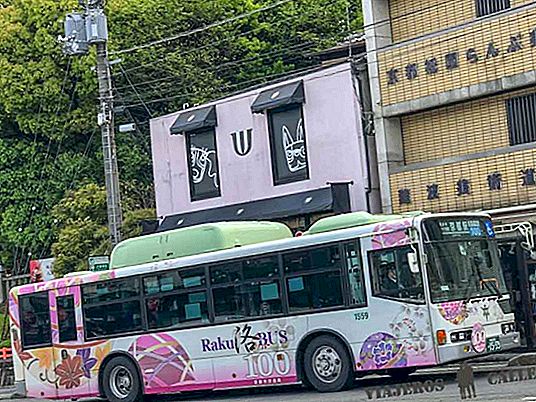
Bus 100 Kyoto
Taxi in Kyoto
Although for us it is not exactly the transportation in Japan Most recommended, the taxi in Kyoto is a usual means of transport, although not so much for tourists, since many of them do not speak English and it is somewhat complicated to understand.
The journey that may be more common in travelers is from the station to the accommodation. From there there is a specific stop where there are taxi drivers who speak English and charge the same as any taxi, something to keep in mind, especially if you have a lot of luggage and your accommodation is far away or not near a metro or bus station .
The journey from Kyoto Station to Gion, where we stayed, cost us 1600 yen.
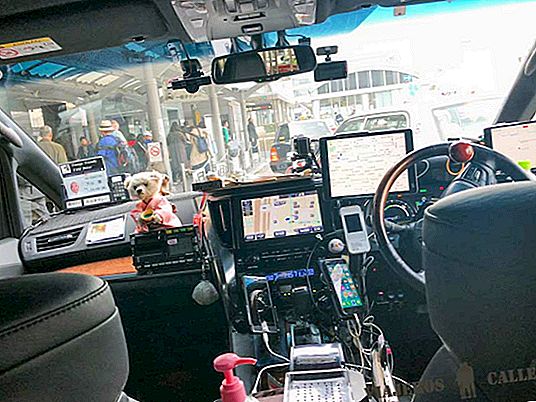
Taxi in Kyoto. Transportation in Japan
Tokyo Transportation
We cannot deny the obvious: Tokyo is big, incredibly big, so most things to see and do in Tokyo are far from each other, as are tourist attractions.
And although in this case there are also buses, the best and fastest urban transport option for travelers in Tokyo is undoubtedly the subway.
We fully understand that just looking at the Tokyo Metro Map can create anxiety, but we assure you that it will only last a few seconds. It is much easier than it may seem and we assure you that after using it a couple of times, you will be able to understand it perfectly and if not, you can at least move around the places of interest without problems.
Tokyo subway
We will start with the most important when using the subway in Tokyo, the lines that exist, how to identify them and how to use them.
It is worth knowing that in Tokyo there are 13 subway lines, from two different companies Tokyo Metro and Toei, in addition to the Yamanote line, which operates JR and is included in your JRP of 7.14 or 21 days with shipping included.
Keep in mind that being two different metro networks, the tickets you buy are not valid for both, although there is the possibility of buying a shared voucher.
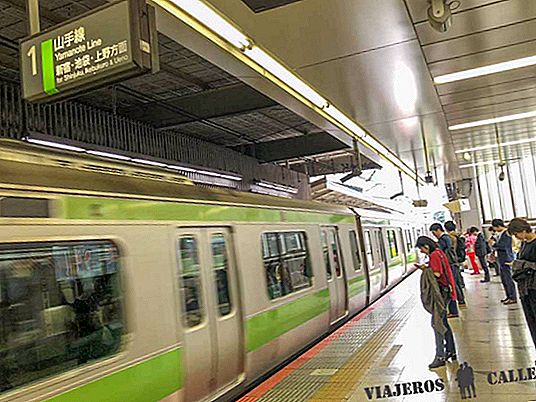
Tokyo subway
Tokyo Metro Price
The price of the subway in Tokyo depends on the origin and destination, being classified as follows:
From 1 to 6 km: 170 yen
From 7 to 11 km: 200 yen
From 12 to 19 km: 240 yen
From 20 to 27 km: 280 yen
From 28 to 40 km: 310 yen
Tokyo Metro daily pass: 600 yen
Toei daily pass: 700 yen
Combined daily subscription for the two metro networks: 800 yen
To keep in mind that if you buy the tickets in 10 bonuses, you will have an extra ticket.
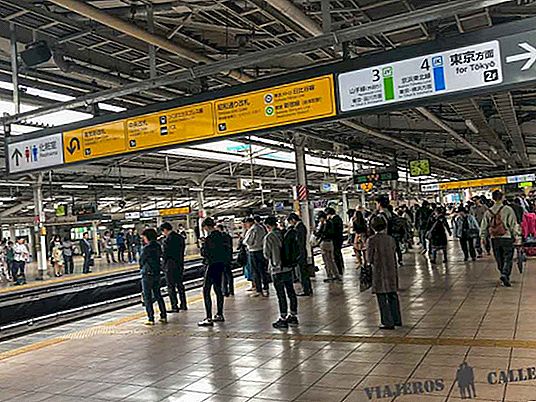
Tokyo subway. Transportation in Japan
Which subway ticket in Tokyo is the best?
This depends mostly on where you have your accommodation in Tokyo, since depending on this, it will be much better to use one line or another or sometimes the combined ticket.
We advise you to pay attention to the subway map in Tokyo, locate the location of your accommodation and then determine which line you should use most frequently.
Buy Tokyo subway tickets
Like its use, buying tickets is much easier than it may seem. In case you want to use simple tickets, that is, single-use tickets, you must follow these steps:
- Search the map with the different stations.
- In this, find your final destination.
- You will see that next to each station name you have an amount in yen, this is the amount of the journey from your home station.
- In the ticket machine, you must select the English language, then the key with the amount you have seen on the plane and put the money, in order to withdraw the ticket.
This process will be avoided if you buy a daily voucher or buy a money card, such as the one we recommended in the transport of Kyoto, although in this case it must be Suica or Pasmo, since ICOCA is only for the Kansai area. Without a doubt, buying one of these cards is one of the best tips for traveling to Japan.
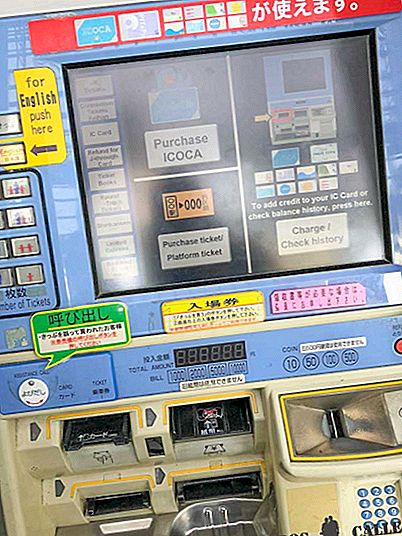
Transportation in Japan
Yamanote line
We could say that it is the most used train line in Tokyo, which operates in a circular way and belongs to the Japan Rail company, so as we said before, it is included in your JRP of 7.14 or 21 days with shipping included.
This line has 29 stations and stops at the main tourist attractions, although in some cases it is somewhat far.

Yamanote Tokyo line
Prices of the Yamanote Line and how to buy tickets
In this case, prices range from 140 to 260 yen, depending on the distances.
The purchase process is the same as in the subway, in case you do not have the JRP of 7.14 or 21 days with shipping included, since in this case, the Yamamote Line is included.
In our experience, with this line you will be able to access most of Tokyo's tourist places, so it is very convenient to take it into account.
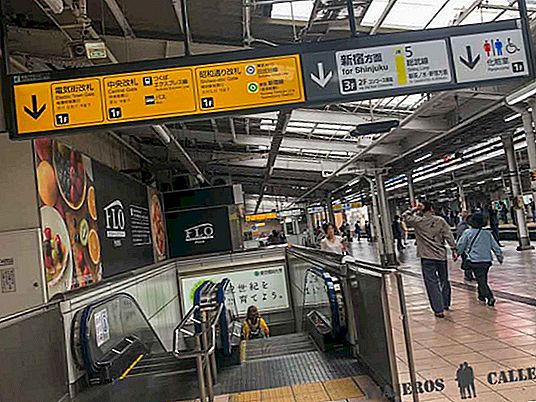
Tokyo subway. Transportation in Japan
How to have internet in Japan?If you want to have internet in Japan a good option is to buy one Holafly SIM card, with which you will have internet from the moment you land, several GB of data, keeping your WhatsApp number and support service in Spanish.
You can buy your Holafly prepaid SIM card here with a 5% discount for being our reader.
Japan train
The train is the transport most used by travelers in Japan. Fast, efficient and above all, to reach the most tourist places in the country, it is one of the transports that you will surely use, at one time or another of your trip.
As in the rest of transportation in Japan, we assure you that it is much easier to use than it may initially seem.
Being a topic a little more extensive than the rest of urban transport, we leave you a series of more specific articles about what we believe, you should know about the train in Japan.
- Buy here the JRP of 7.14 or 21 days with shipping included
- How to use the Japan Rail Pass (JRP)
- How to use HyperDia
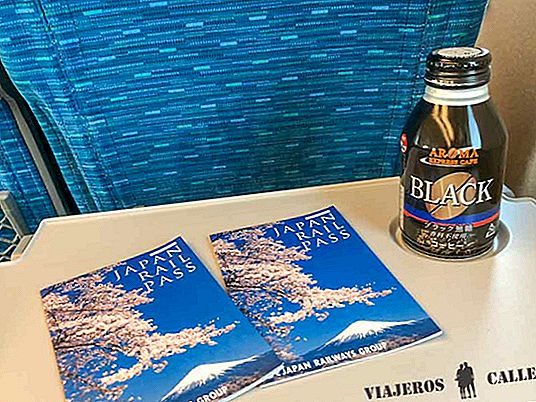
Japan Rail Pass



